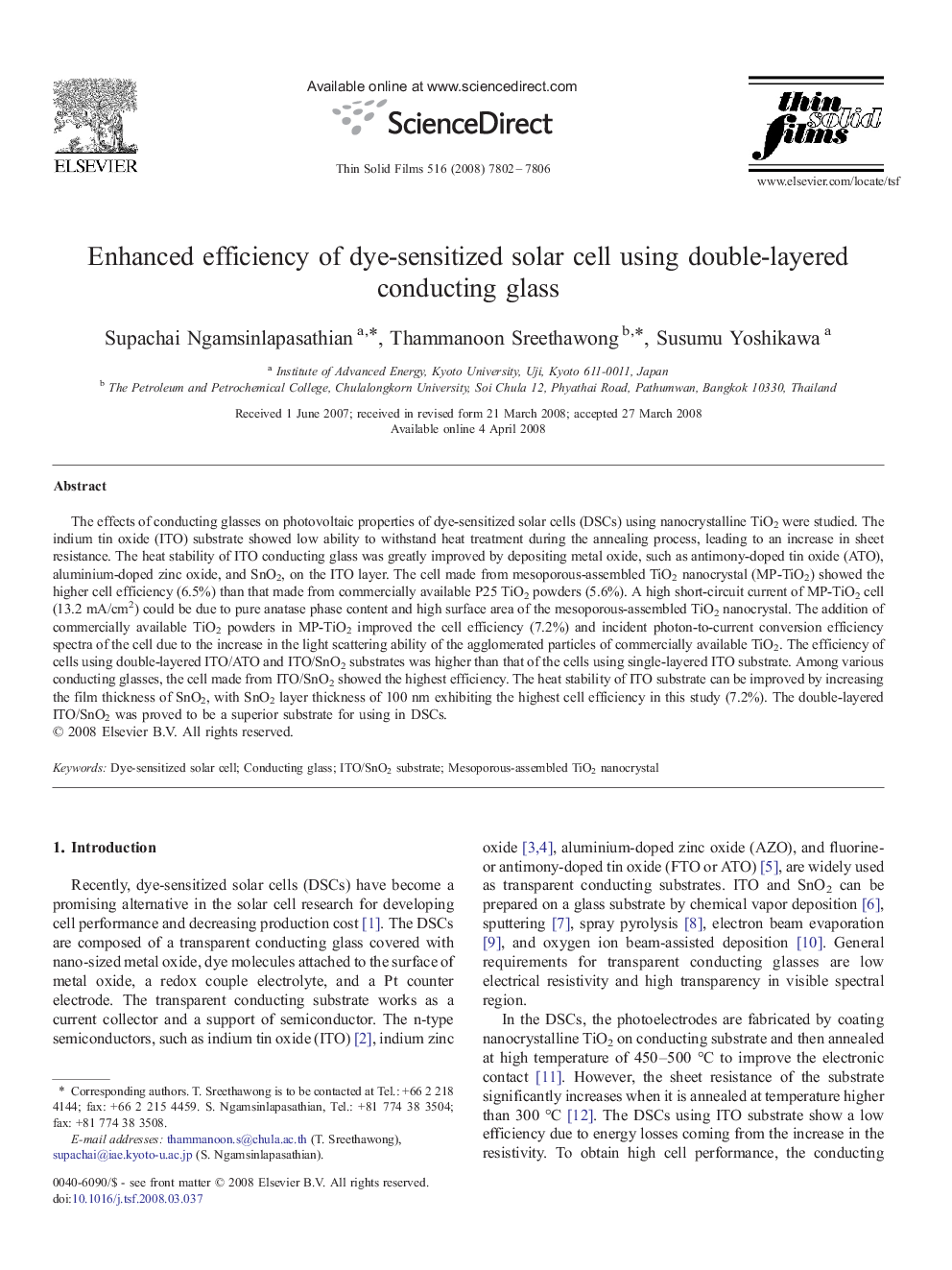| Article ID | Journal | Published Year | Pages | File Type |
|---|---|---|---|---|
| 1673957 | Thin Solid Films | 2008 | 5 Pages |
The effects of conducting glasses on photovoltaic properties of dye-sensitized solar cells (DSCs) using nanocrystalline TiO2 were studied. The indium tin oxide (ITO) substrate showed low ability to withstand heat treatment during the annealing process, leading to an increase in sheet resistance. The heat stability of ITO conducting glass was greatly improved by depositing metal oxide, such as antimony-doped tin oxide (ATO), aluminium-doped zinc oxide, and SnO2, on the ITO layer. The cell made from mesoporous-assembled TiO2 nanocrystal (MP-TiO2) showed the higher cell efficiency (6.5%) than that made from commercially available P25 TiO2 powders (5.6%). A high short-circuit current of MP-TiO2 cell (13.2 mA/cm2) could be due to pure anatase phase content and high surface area of the mesoporous-assembled TiO2 nanocrystal. The addition of commercially available TiO2 powders in MP-TiO2 improved the cell efficiency (7.2%) and incident photon-to-current conversion efficiency spectra of the cell due to the increase in the light scattering ability of the agglomerated particles of commercially available TiO2. The efficiency of cells using double-layered ITO/ATO and ITO/SnO2 substrates was higher than that of the cells using single-layered ITO substrate. Among various conducting glasses, the cell made from ITO/SnO2 showed the highest efficiency. The heat stability of ITO substrate can be improved by increasing the film thickness of SnO2, with SnO2 layer thickness of 100 nm exhibiting the highest cell efficiency in this study (7.2%). The double-layered ITO/SnO2 was proved to be a superior substrate for using in DSCs.
